How is amaryllis different from hippeastrum?
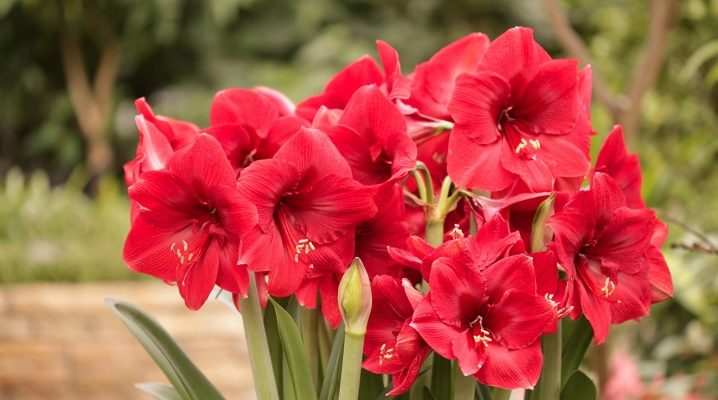
It is difficult for the eye to distinguish two similar externally plants with large beautiful flowers - hippeastrum and amaryllis. From here, mistakes can arise when caring for these indoor plants. In order to prevent them, we will determine the main features of amaryllis and hippeastrum, find out how they are similar, what is the difference, and whether there is a difference in care.
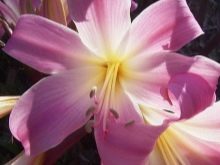
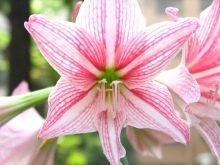
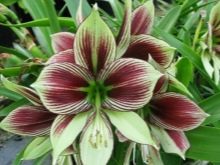
Amaryllis characteristic
Amaryllis from the genus of the same name Amaryllis belongs to the family of bulbous flowering perennial plants. From South Africa, it comes to Europe, where amaryllis was mentioned already in the second half of the 18th century, where the flower is called lileonarcissus or lily.
For a long time, the only plant species was Amarillis belladonna, and in common parlance, Amaryllis is called belladonna (beautiful woman), indicating its poisonousness and beauty.
However, since the end of the 20th century, several more varieties of amaryllis have been bred.
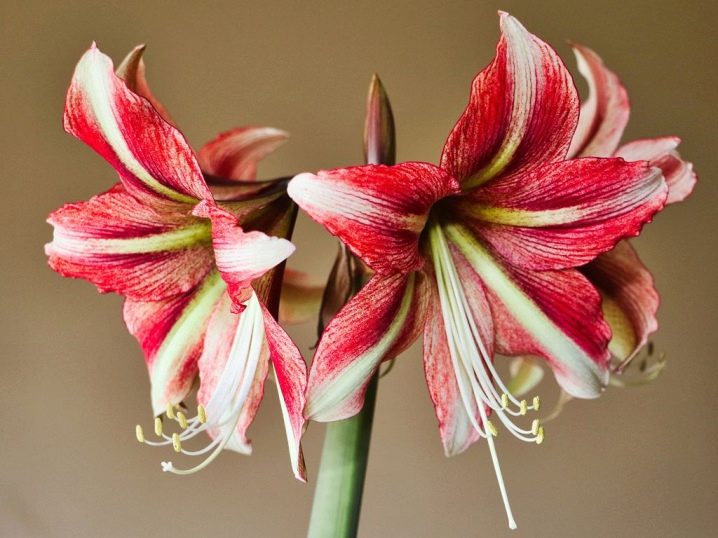
Amaryllis is characterized by high (60-70 cm) straight leaves up to 3 cm wide, they form 2 rows and have a rich green color. Usually amaryllis blooms once a year., rarely representatives with a large bulb (up to 4-5 cm) can bloom 2-3 times a year with excellent care. First, a fleshy flowering arrow about 60 cm long is thrown, at the end of which an umbrella bud is formed, consisting of 7-8, and sometimes up to 12 flowers. The leaves of the plant usually die off during flowering.
Large (6-12 cm in diameter) bell-shaped flowers have 6 petals, tapering towards the end. Their color depends on the type of selection and can vary from white, pinkish, lilac shades interspersed with deep red or purple.
Inside each flower there are stamens on a high leg with large anthers and an ovary, in which, after pollination, triangular fruit-boxes with seeds ripen.
The plant can be propagated from these seeds or vegetatively, taking precautions when working with poisonous amaryllis.

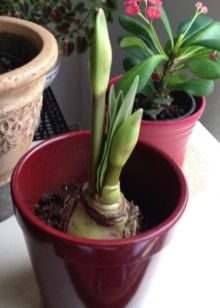
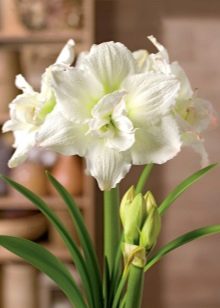
Description of hippeastrum
The closest and most famous relative of the amaryllis is the hippeastrum, hence their similarity. It is believed that hippeastrum was derived from the wild amaryllis from the tropical forests of South America; now this genus unites more than 90 subspecies and about two thousand varieties. Gardeners have known the bulbous flower since the 18th century.
Hippeastrum, which is also called a room lily, can reach a height of 80-85 cm, less often its growth reaches 100 cm.
From the center of the scaly bulb of the hippeastrum, the flowering arrow grows first, in large bulbs, 7-10 cm in diameter, there may be several such arrows. Simultaneously with the arrow or after it, long arrow-shaped leaves of a dark green color appear from the bulbous scales of the plant, dense and smooth to the touch.
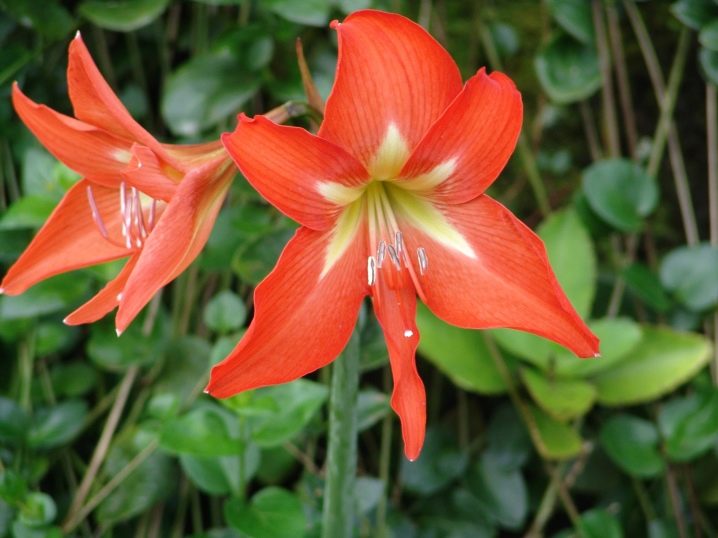
The peduncle holds up to six buds, from which large funnel-shaped flowers bloom from 12-14 cm in diameter, and the diameter of some varieties can reach 25 cm. The petals of the hippeastrum flower are also in the amount of six pieces, the shape can be different - rounded, pointed, oval. The colors, shades and shapes of petals and leaves are varied and depend on the plant variety.
The flowering of hippeastrum occurs at the end of winter and until mid-spring, after which the plant begins its resting season, during which drought usually occurs in the homeland of the flower.
When the seeds ripen, the tricuspid box-fruit of the hippeastrum may burst. Fresh seeds of the plant give better germination than seeds that have lain down.
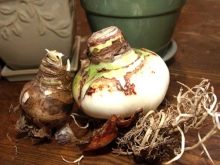

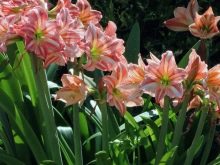
Major differences
An experienced florist can easily determine whether there is a hippeastrum in front of him or an amaryllis. Let's define the main differences between these two relatives.
Between childbirth
Although plants are from the same family, it is a mistake to classify them as one genus. Amaryllis differs from hippeastrum in the monotony of its appearance (Amarillis belladonna). The types of hippeastrum are striking in their diversity and a huge number of varieties. And also the native continents of the two flowers are different: the south of Africa for the amaryllis and the tropics of Latin America for its congener. Amaryllis was the first to become known, while hippeastrum was discovered later.
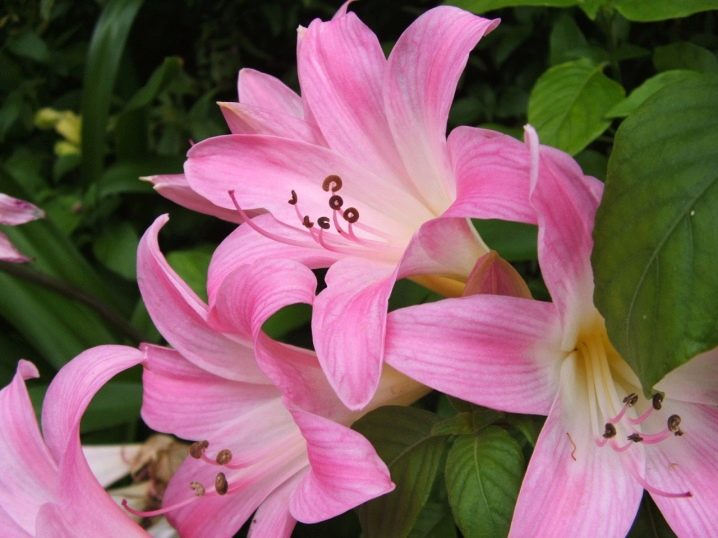
In appearance
There are many external differences between the two plants - from the bulb to the number of flowers. Let's list them.
- Amaryllis bulb It is similar in appearance to a pear, covered with scales-husks from above, pubescent from the inside, often forms bulb-daughters. By dividing the inner plates of this bulb, you can see the cobweb threads. The bulb of the hippeastrum has a spherical shape, slightly flattened at the bottom. The husk of a healthy specimen is light, without pubescence.
- Throwing out an arrow-peduncle from an amaryllis begins on the bulb naked, without leaves. The leaves are formed after the flowering of amaryllis, have a rounded shape in the form of a gutter, smooth to the touch and not wide. Blooming amaryllis is never surrounded by foliage.
- Hippeastrum leaves 1.5-2 times wider than the leaves of a relative-opponent, they appear simultaneously or earlier than the peduncle. The hardness and smoothness of the leaves of the hippeastrum differs depending on the variety, but they are always long, belt-like.
If the plant has an arrow-peduncle, hollow inside - this is a typical hippeastrum, the fleshy stem belongs to the amaryllis.
- In amaryllis inflorescence there are 2-12 flowers, in loose form their diameter is on average 6-10 cm. Their predominant shades are white, purple, pink, red, there may be specks. Hippeastrum has fewer flowers - from 2 to 6, they are much larger (12-25 cm), and the color range of petals is much more diverse (yellow, orange, even black). The number of petals in each flower of these two plants is the same - six.
- Amaryllis flowers scent thin and delicate, hippeastrum flowers do not emit an odor.
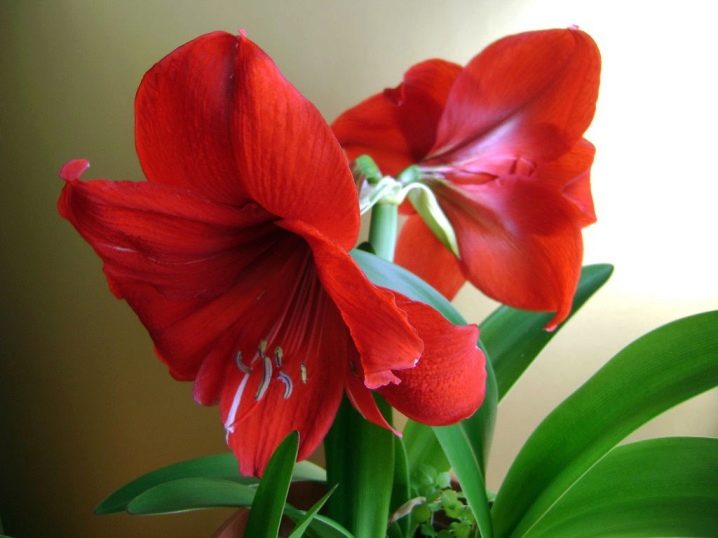
By growth and flowering
Like most bulbs, both of these plants are propagated by bulbs, seeds, scales with part of the root and children. Seed germination in plants is different. Amaryllis seeds hatch in 7-8 weeks, hippeastrum seeds grow in 12-15 days.
Hippeastrum blooms more often than amaryllis - from 2 to 5 times a year with appropriate care. Its buds can delight the grower for up to 8 weeks starting in spring or winter, depending on the forcing of the bulb.
The flowering season of amaryllis usually occurs in late summer - early autumn and, as noted above, occurs once a year for 2-6 weeks.
The flowering period of the hippeastrum can be adjusted at will to the desired date, for which the rest period of its bulbs is shortened or lengthened, and forcing is carried out in greenhouse conditions at high temperature and humidity. After the vegetative period (flowering, and then the formation of leaves), amaryllis usually rests, sheds leaves. The rest can last about three months. The hippeastrum also needs peace, sometimes a caring florist creates it artificially, stopping watering, reducing the temperature and illumination.
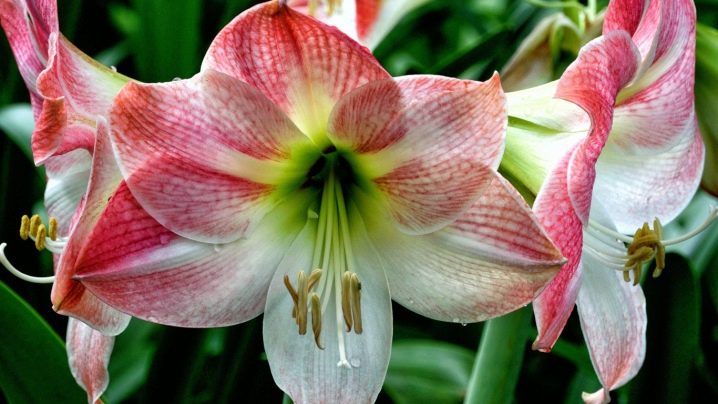
Differences in care
Often, hippeastrum is cultivated not only indoors, but also in the garden, in contrast to the permanent resident of the windowsill - amaryllis. For home cultivation, the bulbs of the amaryllis family are best purchased from a trusted manufacturer in factory packaging. It should be remembered that hippeastrum are more common, and sellers often pass them off as rarer amaryllis. Both plants are not capricious and not time consuming to care for.
The amaryllis bulb must be immediately rooted in a permanent container, a pot, by adding top dressing to it. The top of the onion, about one third, is left open.The capacity should not be large so that there is abundant flowering, the distance from the bulb to the wall of the dish should be 2-2.5 cm.While maintaining a constant temperature of 21-25 ° C heat, after about 24 months (in March-April), the bulb will eject a peduncle. Amaryllis is poured over the walls of the dishes, avoiding water getting on the onion, not very often.
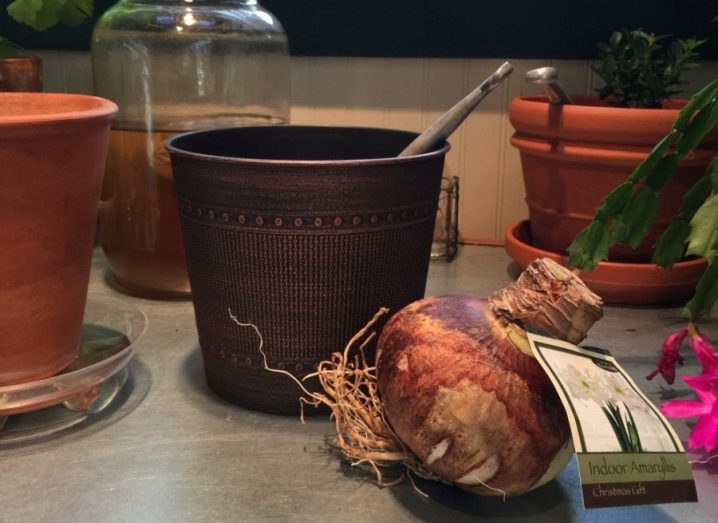
After the appearance of the peduncle, watering is completely limited until it reaches 10 cm and blooms.
The end of the growing season is indicated by the drying of flowers and the appearance of leaves that do not require cutting.
During this period, amaryllis is fed and irrigated for two months, gradually watering less and less frequently. Late autumn and winter until the end of February is the period of rest of the plant, which is kept cool (+ 10.12 ° C) and without watering. Then the growing season begins again, the flower needs good illumination and warmth.
Hippeastrum blooms after planting in moist soil in 1.5-2 months. It does not need to be watered until the peduncle appears. The main thing is to provide good light and warmth (+ 21.25 ° C) without drops. Large onions grow faster and produce more inflorescences. The stem and leaves that have grown by 3-5 cm are watered along the wall of the pot, without getting water on the bulb. Every 2 weeks, the plant is fed with any fertilizer for flowering indoor plants.
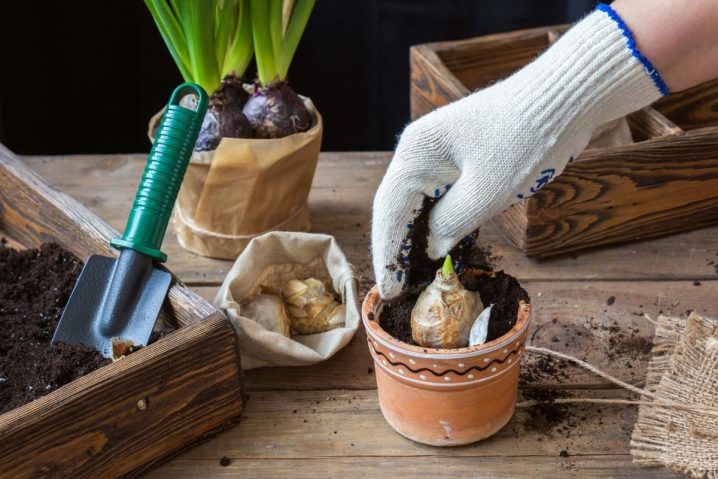
After flowering, the leaves and peduncle of the hippeastrum are cut off without stopping feeding for 6 weeks, and then they provide it with a low temperature (+ 10.12 ° C) for a while - from 2 to 8 weeks. Before a new growing season, at the hippeastrum, the upper part of the soil is replaced or transplanted into another, provided with light and heat. If the onion gave "children", they need to be divided.
For the prevention of diseases, the bulbs of these flowering plants must be disinfected in a manganese solution before planting, and the cuts must be sprinkled with ash or crushed activated carbon.
They are often affected by the defeat of fungi, rot, therefore it is important not to allow stagnation of water in the pot and treat them with antifungal agents - fungicides. If infection could not be avoided, the plants are isolated, the damaged areas are cut off, treated with a Bordeaux mixture, fungicidal preparations.
Pests living in the soil can spread the fungus. They can be ticks, worms, false shields. The fight against them is carried out using a soap solution or insecticides.
For tips on caring for amaraliss, see the video below.

























The comment was sent successfully.